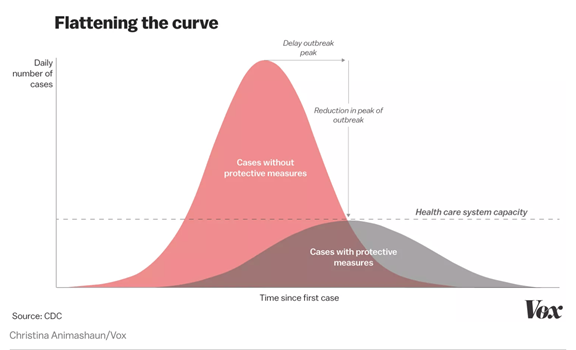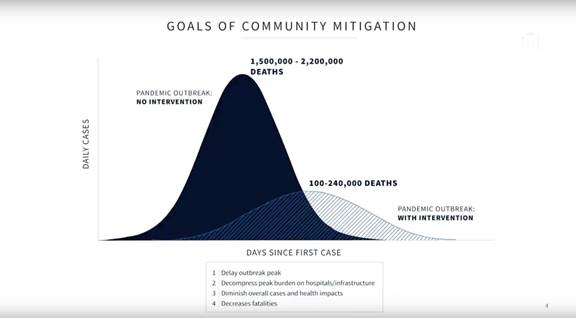"Flatten the Curve."
Those three words summarize an international mandate that has become the rallying cry for how the world makes sense of–and responds to–a global crisis that will define our generation. And it’s based on a chart. A data visualization. The sort of thing previously relegated to Powerpoint slides, scientific journals and the occasional social media “infographic” is now helping quickly establish global understanding and shape policy in a crisis.
A massively complicated, messy, unpredictable, confusing and fast-moving challenge was visualized in a chart that was beautifully simple and clear in its message: “The first curve is what happens if we don’t take the right action. The second curve is what happens if we do.”



